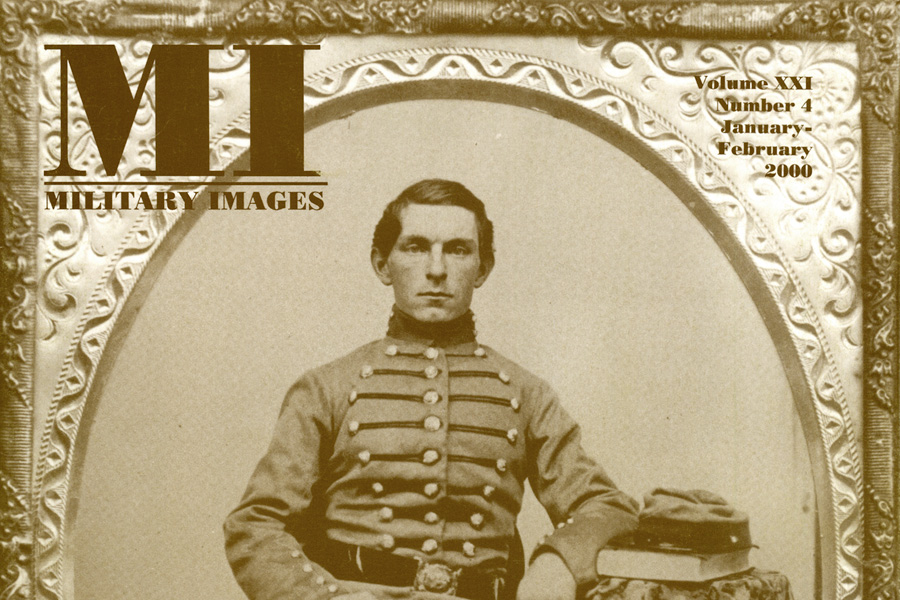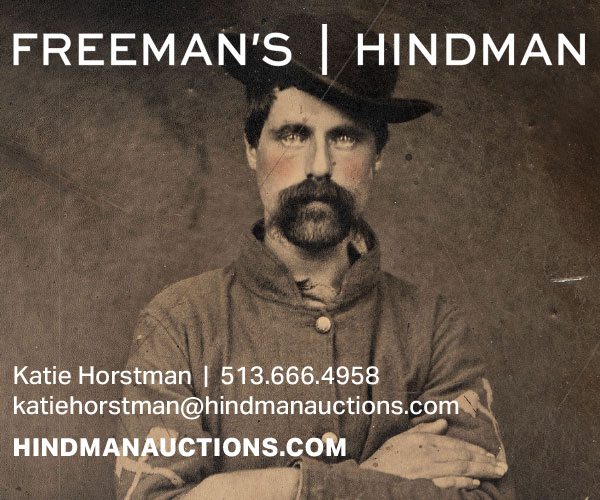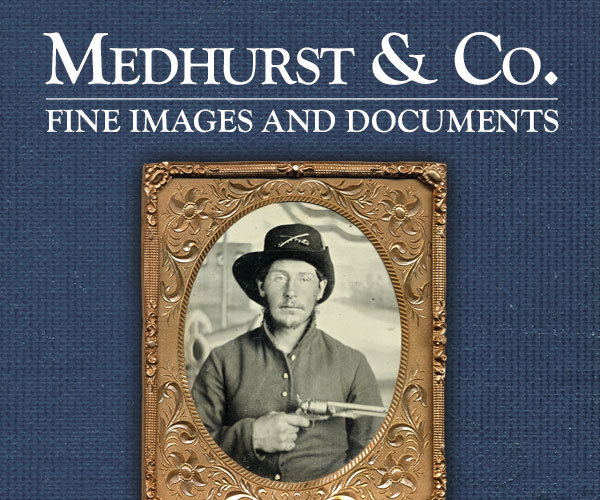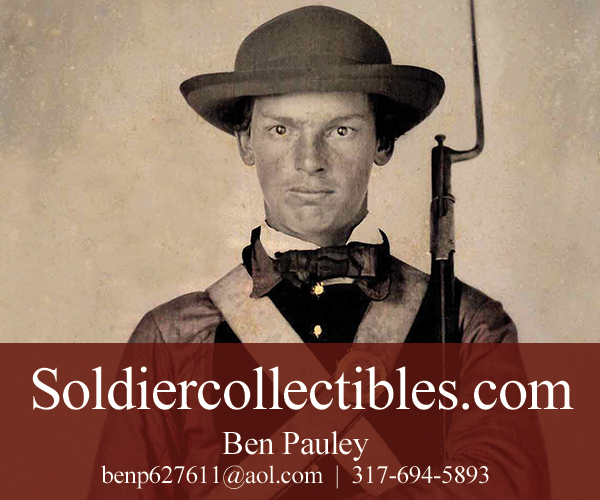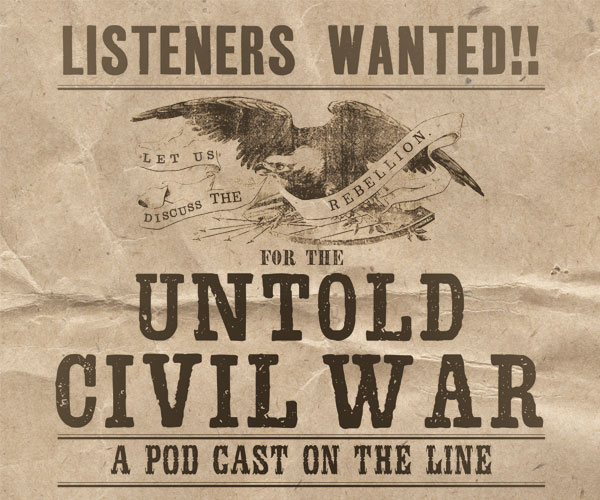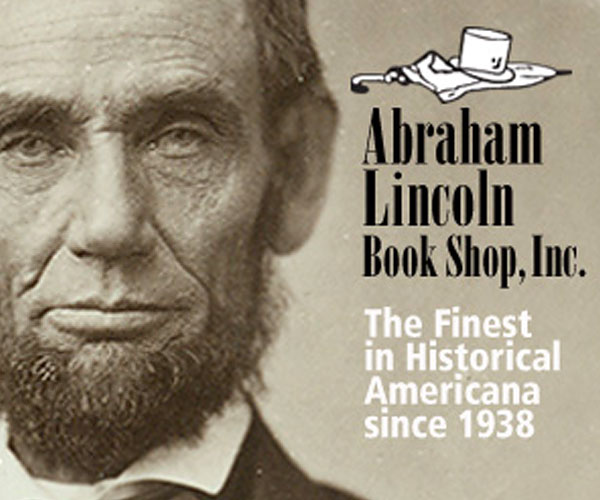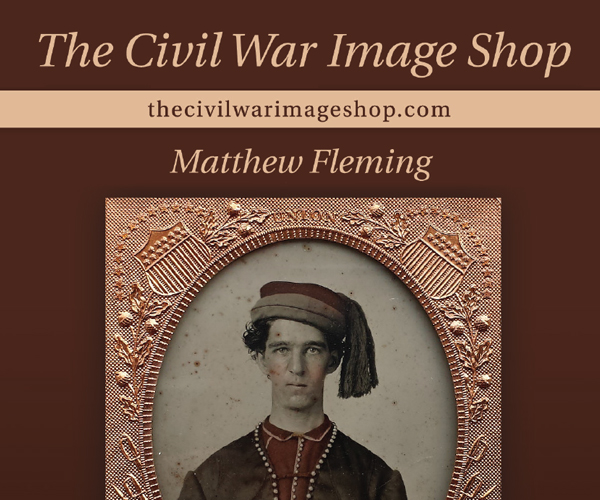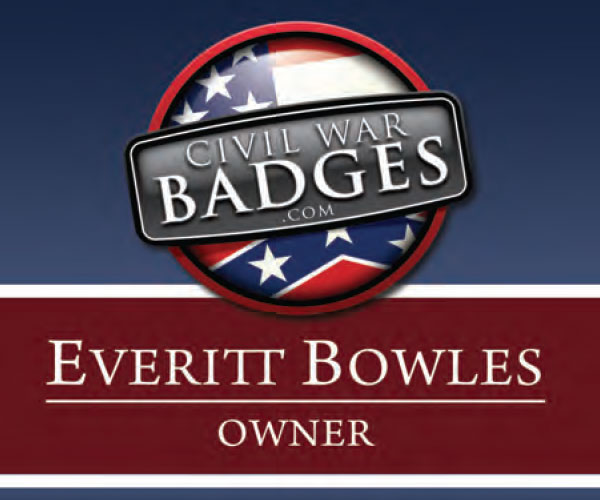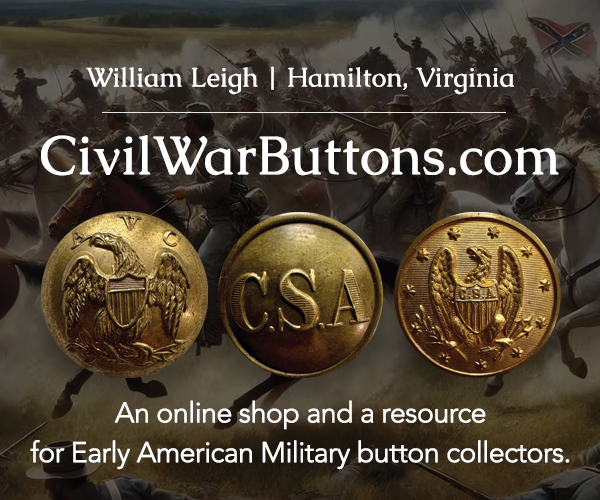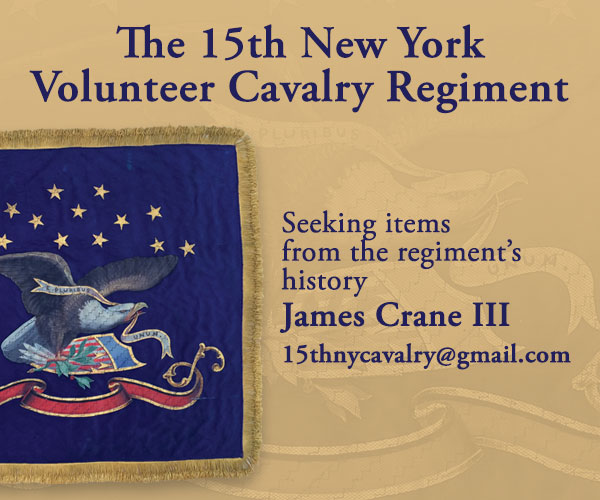The complete issue
Vol. XXI, No. 4
(40 pages)
Print edition: Visit our store to check availability
Digital edition: Visit JSTOR.org to purchase
Subscribe to MI
Explore the MI Archives: Browse | Advanced search | Tutorial
Inside
Cover image
A half-plate ruby ambrotype from the Al Holzinger Collection pictures an unknown soldier that some believe may be a young John Singleton Mosby.
Editor’s Desk (p. 3)
The editor explains that the New York issue has been pushed back, mentions that Wisconsin and Tennessee issues are in planning, and that The Western Reserve Historical Society will host a special Civil War exhibit.
Mail Call (pp. 4-5)
Letters include a call to action to maintain the Gettysburg monuments, praise for Southern Soldiers, questions about the identity of two portraits, and more.
Uniforms & History by Michael J. McAfee (pp. 6-7)
In “3rd Regiment New Jersey Volunteer Cavalry, 1864-65 (1st U.S. Hussar Regiment) ‘A Horse to Ride and a Sword to Wield,’” McAfee examines the distinctive uniform and history of the “Butterfly Regiment.” The text is illustrated with portraits of Conrad Warnick of Company M and an unknown first sergeant. Also included is an engraving from Leslie’s Illustrated.
Will the Real John Singleton Mosby Please Stand Up? Wild-eyed speculation by Harry Roach (pp. 8-9)
The editor and publisher makes the case that the soldier pictured on the cover may in fact be a young Mosby. A comparison of the image to four known portraits of Mosby illustrates the text.
The Musket Bullets Rattled Like Hail Against the Bulwarks: Excerpts from the diary of Pvt. George Varnick, U.S.M.C. Marine Guard, U.S.S. Richmond, Mississippi River, April 24-May 1, 1862 edited by David M. Sullivan (pp. 10-17)
The dramatic capture and occupation of New Orleans is the focal point of diary entries by Varnick, who joined the Marines at Philadelphia on June 5, 1860.
Josiah Archibald Lee, Private, Company I, The Pettus Rifles, 17th Mississippi Infantry, C.S.A. by Bruce Reith (pp. 18-19)
Lee was one of four brothers who served in the regiment. Though wounded at Gettysburg and Richmond, he survived the war and lived until 1907. His wartime portrait illustrates the text. Also included are vignette profiles of his brothers, John, William and Giles.
My Old Blue Cavalry Trowsers: a poem by Winsor Bruce Smith, late sergeant, 1st Maine Cavalry by James J. Hennessey (pp. 20-21)
Well-worn paints of faded blue dominate the first stanza of a poem by Smith, who survived capture at Weldon Railroad, Va., on Sept. 29, 1864, and imprisonment in Richmond. Known as “Win” to intimates, he died on June 25, 1885—exactly 20 years to the day if his discharge from the army. A portrait of Smith illustrates the text.
“I am Tired of Curing Wounds…I Now Prefer to Make Them” The life & death of Lucius Manlius Sargent, 1st Massachusetts Cavalry by Paul R. Johnson, M.D., F.A.C.S., and Samuel B. Burgess, M.D., F.C.A.P. (pp. 22-28)
Artist, surgeon and soldier, Sargent practices all three with success—until a rebel shell struck him in the chest during a fight at Bellfield, Va., on Dec. 9, 1864. His wartime portrait, examples of his illustrations and surgical kit illustrate the text.
Bvt. Brig. Gen. F.A. Starring: Opportunist or Ideal Soldier? by Richard K. Tibbals (pp. 29-37)
The author explores the web of connections between Starring and other senior officers in an effort to answer the question in the headline. A series of portraits of Starring along with other soldiers in his orbit, including Brig. Gen. Thomas E.G. Ransom, Gen. Mason Brayman, Capt. William A. Bailhache, Lt. George Colby, Pvt. Anson Hemingway, Maj. Joseph Stockton and Lt. Col. Joseph Wright.
Passing in Review (p. 38)
Three publications are mentioned, Faded Coat of Blue (Avon Books) by Owen Parry, Gettysburg’s Unknown Soldier: The Life, Death, and Celebrity of Amos Humiston (Praeger) by Mark H. Dunkelman and Custer and His Commands from West Point to Little Big Horn (Stackpole Books) by Kurt Hamilton Cox.
Light & Shadow: Technical Aspects of Photography & Collecting (p. 39)
Caring for tintypes and ambrotypes are discussed in this installment.
Captain Bob’s Caveat Emptorium (p. 43)
A photo of Lord Cardigan himself is offered by the cheeky Captain. As usual, he’s trying to pull one over on us.
Sutler’s Row (p. 40)
Back cover
A quarter-plate ambrotype from the Richard Tibbals Collection pictures a militiaman in a uniform based on George Washington’s Continentals.

